Cultural Intelligence, also known as Cultural Quotient (CQ), has always been a critical legal skill but it is being increasingly taught and discussed.
If we accept the premise that the skills needed to be a great lawyer involve a combination of technical ability and interpersonal skills, then CQ (together with EQ, Emotional Quotient) is a huge component of a lawyer’s success when operating in a diverse and international context.
Most international lawyers understand this, but many lawyers think of it only in abstract terms, and too late in the day. Some, perhaps surprisingly, never consciously think about it at all.
Getting culture right or wrong can make all difference to winning or losing a client and between succeeding or failing in a negotiation.
CQ will also have a direct effect on a lawyer’s reputation as an international practitioner.
Culturally intelligent lawyers are aware of their own unconscious biases.
They understand that it is part of the human condition to interpret the behaviour of others subjectively through one’s own cultural lenses. The cultural reference points of a US, a Chinese, an Indian or an Austrian lawyer for example, are not identical. Each of them may be led (or even may jump) to a different conclusion in the same way a computer programme may default to a given process.
Just as culturally aware lawyers understand their own defaults, they have also learnt about “cultural averages”. It is absurd, of course, to generalise about, for example, ‘all’ Chinese, British, Brazilians, Indians or all the Germans, but, using research, we can learn about and anticipate average behaviours.
Culturally intelligent lawyers have learned about these averages, or ‘trends’ in behaviour. They know, for example, that ‘on average’ you are more likely to see a certain type of behaviour or reaction during a meeting or negotiation in say Beijing rather than in New York, or in Moscow rather than Abu Dhabi.
And this is where the Cultural Audit comes into play. Think of it as a due diligence process.
As a tool the Cultural Audit should be used at the outset of any deal or negotiation. It is at that stage that lawyers with a high level of CQ ask themselves a number of key questions. The answers to these questions will have a direct bearing on both the deal or negotiation, even down to the choice of litigator, arbitrator or mediator where disputes arise.
Some of these questions that should be asked as part of this cultural due diligence exercise include:
- What is the preferred style of communication of the parties? Is it direct or indirect, formal or informal? Emotional or non-emotional? Confrontational or accommodating? Are interruptions part of normal conversation or does each participant in a meeting speak in turn? Is this a culture where it is necessary to “decode” language in order to understand its true meaning?
- How do the parties manage time? Is time managed strictly or is time fluid? In some cultures, time is thought of as highly rigid. Meeting times are rigorously adhered to and interruptions are disliked. People concentrate on one activity or relationship at a time and deadlines are observed. In other cultures, however, time can be viewed differently and may be more of a guideline than a rule. People may well multi-task and can focus simultaneously on multiple relationships. If new circumstances arise, timetables and deadlines may well change, without
- What is the dominant style of reasoning and decision-making process? Some cultures, the UK and the US for example, will have a tendency towards a pragmatic, fact-led thinking process rooted in a more inductive way of reasoning and influenced in their history by empirical philosophy. The common law legal system, which developed out of case law, is a prime example of inductive reasoning. This style of reasoning starts with observations and from there ultimately constructs a theory. In contrast, other cultures – indeed many European ones – may approach a problem from the starting-point of a fully-formed theory, or principle. Through rigorous and predetermined analytical steps, this theory is then tested and either proved or disproved. This deductive approach to reasoning finds its origins in the philosophical writings of, say, René Descartes and the civil law system, with codification as its basis, reflects this differing approach.
- What is the preferred style of negotiating? This is linked of course to reasoning and decision making and will vary from culture to culture. Negotiations in the US or the UK, for example, will tend to be approached in a linear, point by point, fashion with progress measured sequentially as each item is discussed, negotiated and then supposedly concluded in order. In contrast, Chinese negotiations may be handled in a much more circular or holistic manner (zhengti guannian, or 整体观念, in Chinese). This means that all or at least many different issues might be discussed at once, in no specific sequence and with the discussion itself often incorporating lengthy explanations and fact delving. Only once all points have been exhaustively discussed will the deal “as a whole” be again looked at, negotiated and hopefully concluded.
- What is the role and importance of hierarchy, status and seniority in a particular culture and society? Understanding hierarchy, formality and seniority is critical to understanding where the power of decision making lies and will be a key factor in meetings and negotiations. In Chinese culture, for example, “social status” (shehui dengji, 社会等级, connoting respect and obedience to one’s superiors) can be of critical importance. The European company which sends a relatively junior (albeit technically extremely knowledgeable) delegate to a very high-level meeting in China may fail in its business attempts simply because of its inability to understand the importance of formality, of deference and of hierarchy in a culture still heavily influenced by the teachings of Confucius. For some of us, it is therefore perhaps reassuring to remember that in a number of cultures around the world age (and having sufficiently grey hair) still does carry certain advantages.
- How is trust built and is a culture primarily focused on establishing a contract/deal or a relationship? Is the aim of a negotiation the start of a long-term relationship or is its aim mainly the signing of a written contract? Is gaining personal and individual trust a prerequisite for durable and meaningful relationships (between client and lawyer and between the parties to a deal) and how will all this affect the time spent on social interaction (where pure business will not be discussed) as an integral part of getting business done.
Armed with this type of prior knowledge, we all become better lawyers in our truly diverse world.
Culture is like an iceberg
When we first are exposed to another culture, differences stand out to us at their most simplistic level. We immediately notice differences in language, etiquette, dress, behaviour and manners. Yet, these represent the visible part of a culture, the tip, of the iceberg.
The invisible part of the iceberg, the mass below the waterline, is much bigger and more significant than its top. Below the surface there might be marked distinctions in how we communicate, deal with conflict, manage our time and approach problems. There are deep-rooted differences in perceptions of professionalism, of right and wrong, and of acceptable behaviour.
The culturally intelligent lawyer appreciates the importance of being a ‘cultural guide’ to ensure that clients in unfamiliar jurisdictions reach their journeys’ destinations safely, smoothly and harmoniously.
Above all, the culturally intelligent lawyer ensures that their client never hits the iceberg but always navigates around it.
References and further reading:
- Earley, P. Christopher & Soon Ang, Cultural Intelligence: Individual interactions across culture.
- Graham, John L. & N. Mark Lam, The Chinese Negotiation.
- Hofstede, Gert Jan & Michael Minkov, Cultures and Organizations: Software of the Mind: Intercultural Cooperation and Its Importance for Survival.
- Lewis, Richard E., When Cultures Collide.
- Meyer, Erin, The Cultural Map.
- Rosinski, Philippe, Coaching Across Cultures.
- Sebenius, James K., The Hidden Challenges of Cross-Border Negotiations.
- Storti, Craig, Figuring Foreigners Out.
- Trompenaars, Fons & Charles Hampden Turner, Riding the Waves of Culture.
Photo by rabbit75_cav from Canva.




